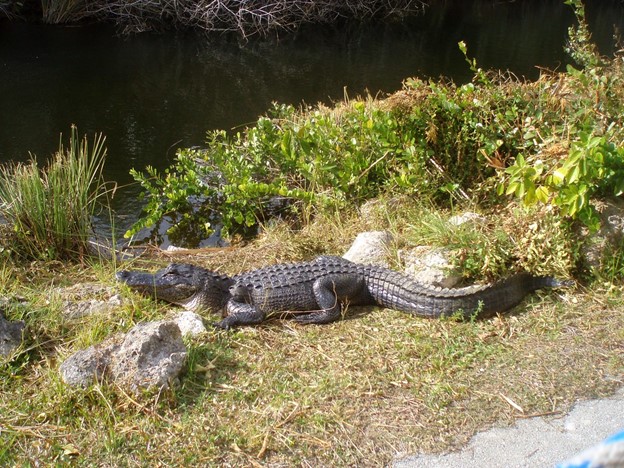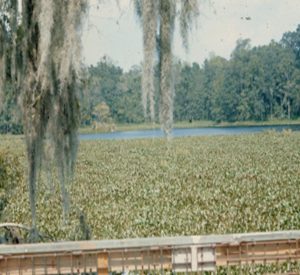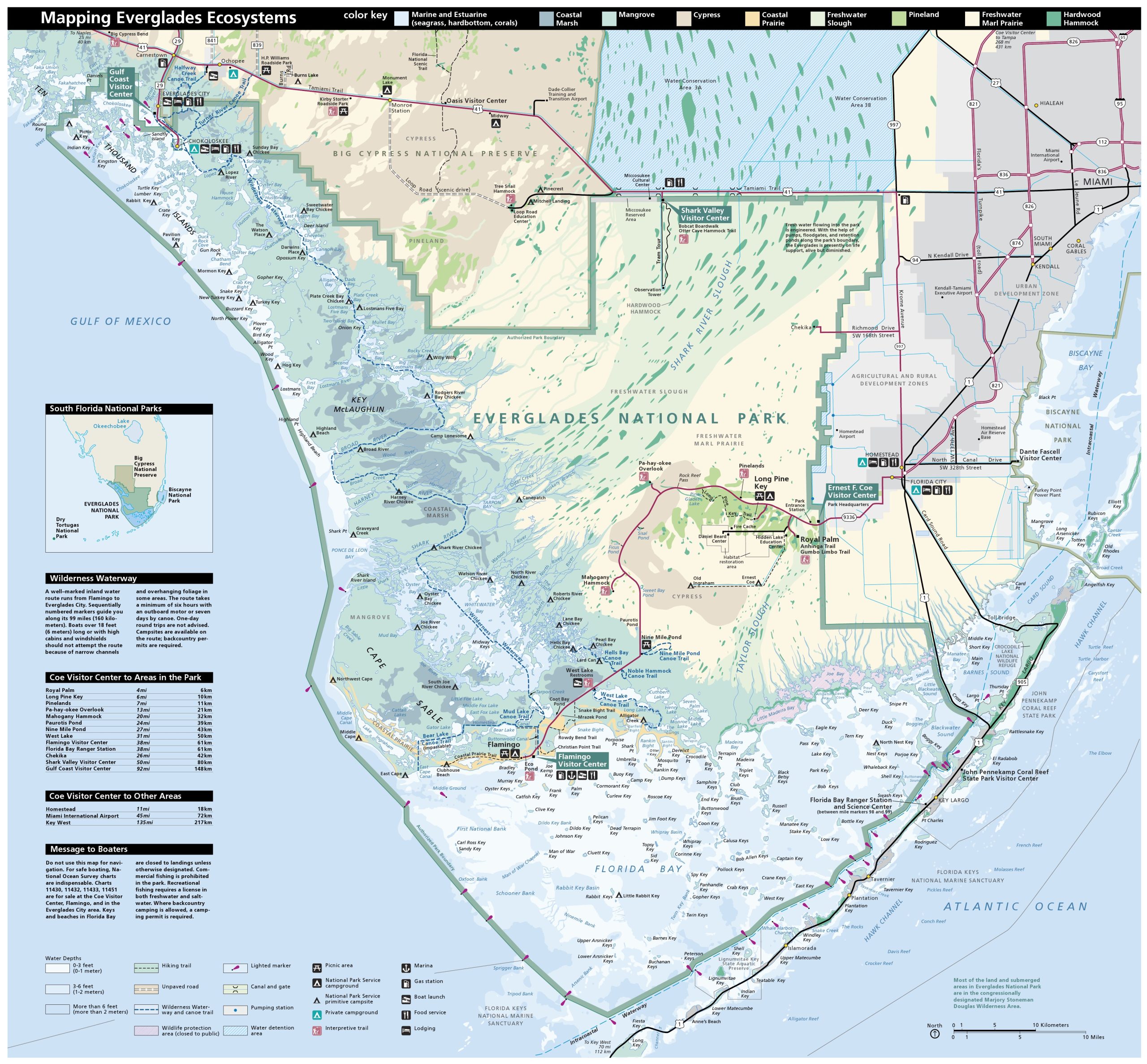28 Gator for the Gators
Rick Bein
While living on the University of Florida Campus, as a graduate student during the early 1970s alligators were around but did not present much of a threat to people. As opposed to crocodiles, it seems that they do not like human flesh!

Alligator genießt die Sonne”by Sebastian Fuss is licensed under CC BY-SA 2.0 Four foot alligator along lake Alice.
Alligators live in Lake Alice on the south side of Campus and like in the Everglades, they are fish farmers. They were no problem until their lake was invaded by the invasive water hyacinths that covered the water and sucked out all the oxygen. This did not directly bother the Alligators, but it did starve the fish of oxygen which in turn starved the aligators of their traditional food.
The next thing we knew, “Gator Country” seemed to have expanded its magnificent logo and gators were wandering campus, looking for alternative food. Fortunately, that was not human beings.
 Lake Alice covered with Water Hyacinths. Photo by Rick Bein 1973
Lake Alice covered with Water Hyacinths. Photo by Rick Bein 1973
I recall an alligator encounter on campus when a woman was walking her small dog past a wooded area. Suddenly she looked back and discovered she had an alligator on the leash instead of a dog! Needless to say, she let the alligator keep the leash. Not long after that the University began dredging the water Hyacinths off of the lake, restocked it with fish and the alligators reduced their nightly adventures.
Fortunately for people, alligators find dog meat rather tasty! Fences around back yards are not there to keep the dogs in, but the gators out!
The alligator (Alligator mississippiensis) is a keystone species in Florida. It has a wide ecological niche which many other species depend upon for their survival. American alligators are found in the southeastern United States including all of Florida, Louisiana, the southern parts of Georgia, Alabama, and Mississippi, the coast of the Carolinas, Virginia, Southeastern Texas, southeast corner of Oklahoma, and the the southern tip of Arkansas. Not to be confused with crocodiles which rarely appear in the United States, the Alligator does not live outside of the USA.
Freshwater is its preferred habitat, while it does venture on to land when necessary to find food. American alligators live in freshwater environments, such as ponds, marshes, wetlands, rivers, lakes, swamps, as well as in brackish environments. The Florida everglades provides the most ideal habitat and that is where most “gators” are found.
 Florida Everglades map by the US National Park Service, Free maps, npmaps.com. Notice the small green linear hummocks shown in the central north section of the map.
Florida Everglades map by the US National Park Service, Free maps, npmaps.com. Notice the small green linear hummocks shown in the central north section of the map.
The Everglades is a gigantic marsh of mostly shallow water extending for miles across south Florida, and, if it were not for the alligator, it would be perfectly flat with only three feet of standing water. Alligators create small islands in the everglades which are called hummocks where they lay their eggs. They make hummocks by excavating earth from under the water, deepening a spot to as much as 6 feet, while piling up hummocks one or two feet above the water. These small islands and pools actually serve a wide habitat for small mammals, other reptiles, birds, and insects as well as fish. The alligator is therefore considered an important species for maintaining ecological diversity in wetlands.
The hollowed out deepened pool is ideal for fish to breed and live comfortably. Essentially, it serves as a fish farm for the alligator who is the manager of this small ecosystem, harvesting fish from time to time but always allowing a breeding population to survive. This symbiotic community thrives sustainably.
Not many universities have the namesake of their logo actively living on campus. (University of Florida is locate in Gainesville in North central part to the State). When athletic opponents come to challenge the “Gators”, little do they know with whom they are really competing?

